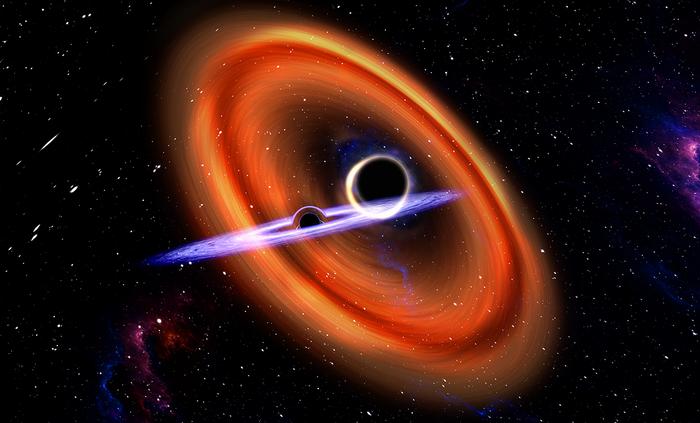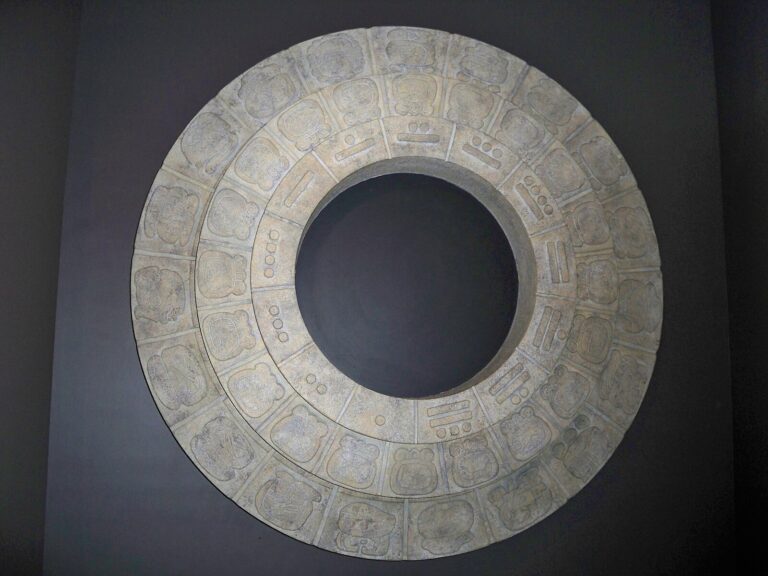Key Takeaways:
With proof of liquid water in the farthest reaches of the solar system, it’s clear that the habitable zone isn’t the only place life might exist, but it may be years before that knowledge changes how — and where — astrobiologists look for habitable exoplanets.
If you want to look for life in space, most astronomy textbooks will tell you to stick to the Goldilocks Zone: the region around a star that’s the right temperature range for liquid water to exist on the surface of a planet, also called the habitable zone. The trouble is that water seems to be everywhere on icy moons in the outer solar system, well beyond the textbook habitable zone, and some planetary scientists have even suggested that there could be liquid seas out in the Kuiper Belt. Thanks to those discoveries, some experts are suggesting that it could be time to rethink how we define the habitable zone. But does that mean changing how we search for potentially habitable worlds in other solar systems?
Beyond the Goldilocks Zone
Until the last few decades, scientists assumed that the conditions for life, starting with liquid water, could only exist in a planetary neighborhood exactly like ours.
“It’s been a big shift, but it’s been kind of gradual; it just kind of kept creeping up on people,” JPL’s Diana Blaney, principal investigator on the Mapping Imaging Spectrometer for Europa, said. That shift happened in two parts, fueled by discoveries in broadly different fields. First came the idea that life could live in colder, darker, stranger places than biologists could have dreamed. Second came the idea that the most basic conditions for survival – chiefly the presence of liquid water – could turn up in unexpected places.
Most of the liquid water we’ve found in the solar system is concealed beneath the icy crusts of moons orbiting Jupiter and Saturn, but before scientists sent Voyager, Galileo, and Cassini out into the outer solar system to find those sub-surface oceans, they found analogues here on Earth. In 1970, airborne radio-echo sounding surveys found the first evidence of lakes hidden beneath several kilometers of glacial ice in Antarctica. Researchers have found 379 such lakes so far, and a series of discoveries in the last few years have confirmed the presence of microbial life beneath several of them.
Just before the first mission to the outer solar system, in 1976 – while Viking 1 was searching for life on Mars – botanists discovered bacteria eking out a living in porous sandstone in the cold, dry, thoroughly inhospitable mountains of Antarctica’s Ross Desert. The following year, in 1977, a marine geology expedition discovered hydrothermal vents in the Galapagos Rift, deep beneath the eastern Pacific Ocean. In the lightless depths of the ocean, they found a thriving ecosystem based on chemosynthesis.
Looking back, it’s easy to see how discoveries of extremophiles and sub-glacial lakes here on Earth pointed toward the idea that wildly unexpected environments out there might be habitable.
The Voyager spacecraft launched later that year, on their way to the outer solar system; it was a mission that some in the scientific community at the time didn’t expect much from – after all, the moons of the outer solar system were far outside the bounds of the Goldilocks Zone.
“It was really Voyager that broke all of this open, because a lot of scientists thought that most of the outer solar system was just dead balls of ice and rock,” said planetary scientist Jonathan Lunine of Cornell University. From 1979 to 1981, Voyager sent home images of active, complex worlds: Io with its violent, volcanic surface; Titan with its thick, hazy atmosphere; and Europa with a cracked crust that hinted at tidal movements of an ocean beneath.
Once scientists realized that the moons of the outer solar system were dynamic, unexpectedly complex worlds, some began to speculate that they could host life, warmed not just by the light of the Sun, but by the tidal pull of a gas giant. Meanwhile, discoveries here on Earth continued apace, feeding into astrobiologists’ ideas about where life might flourish.
All these worlds are yours …
The Galileo spacecraft left Earth in 1989, bound for Jupiter amid intensifying speculation about what it might find waiting beneath the ice at Europa. Galileo’s close flybys of the Jovian moons confirmed what Voyager’s images had hinted at: liquid water exists well outside the familiar confines of the Goldilocks Zone, beneath the ice of Europa and Ganymede. Then, in 2005, the Cassini spacecraft captured surprising images of watery plumes jetting out from the southern surface of Enceladus.
As the data came back from Galileo and Cassini, it collided with research on extremophiles here on Earth, fueling discussions about which unexpected corners of our solar system might turn out to be habitable.
“I think they actually reinforced each other, you know?” said Blaney. “A lot of the stuff, I think, was happening in parallel. You were sitting in [science conferences] listening to people talk about the building evidence for an ocean on Europa, and then you would go next door and listen to someone talk about life in the Antarctic dry valleys, and that kind of cross-communication between the different communities, I think, got people thinking more about Europa potentially having life now.”
Now astrobiologists may have to rethink the limits of habitability again. In late 2016, William McKinnon, a planetary scientist at Washington University in St. Louis, and his colleagues concluded that orientation of Sputnik Planitia, the icy heart-shaped basin in Pluto’s northern hemisphere, could only be explained by an uneven distribution of mass in the planet’s crust. That, in turn, the researchers claimed, could only be explained by a liquid ocean of (mostly) water beneath the ice. There’s no proof yet that Pluto hosts a subglacial lake similar to those beneath Antarctica’s ice, but the research proves it’s theoretically possible for Kuiper Belt Objects to hold liquid water.
“We know oceans exist beneath icy crusts, generally maintained by tidal heating (Europa and Enceladus). What Pluto does is to push the potential limits of habitable zones to icy dwarf planets in deep solar space,” said McKinnon.
Miniature Habitable Zones
The current view among many astrobiologists is that, because there are so many environments where liquid water – and therefore the basic ingredients for life – might exist, there are many habitable zones in a solar system. There’s the traditional Goldilocks Zone, where solar heating keeps the planet at just the right temperature; there are orbits around gas giants, where tidal heating could keep water liquid and potentially habitable beneath the ice.
“The data point I seize on is more the number of potential habitable environments we have in our single solar system. I don’t think that’s a fluke,” said Curt Niebur, program scientist for NASA’s Europa Multiple Flyby Mission. “I think as we peer outward, we are going to find that in most solar systems we explore, either in person or via telescopes, that there is likely to be multiple habitable zones in every solar system.”
In fact, we’ve found more liquid water on icy moons in the outer solar system than in the temperate belt of the Habitable Zone. Some planetary scientists are even beginning to talk about the idea that gas giants, like Jupiter and Saturn, create their own habitable zones through their tidal heating of icy moons like Europa and Enceladus. And if McKinnon and his colleagues turn out to be right about what lies beneath Pluto’s Sputnik Planum, then there may even be little habitable zones far out in the frozen reaches of the Kuiper Belt.
“Sometimes it’s around giant planets like Jupiter, sometimes it’s on Earth-like planets, sometimes it’s in the deep solar system like at Pluto,” said Niebur. “I think every one of those three cases is a Goldilocks zone, and I think that there are more Goldilocks zones out there remaining to be discovered.”
That means that we may not be giving gas giants enough credit as hosts for potentially habitable worlds. For one thing, they seem to be much more common – or at least easier to detect from Earth – than rocky planets, especially rocky planets that happen to orbit just the right distance from their stars, which means the odds are in favor of a gas giant winning the lottery of biochemistry.
“I think it’s probably likely that gas giants are more common than terrestrial worlds, so just by sheer numbers, I think that they could either directly or indirectly provide far more habitable zones, far more Goldilocks zones, than terrestrial planets,” said Niebur.
That’s an eye-opening concept for astrobiology, but in practice it could be nearly impossible to draw a neat map of that type of habitable zone. Mapping a star’s Goldilocks Zone is pretty straightforward; the temperature of a planet depends on its distance from the star, as well as how much heat the star produces. Figuring out the region of potential habitability around a gas giant, on the other hand, requires a lot more information about the gas giant, its moons, and how they all interact.
The oceans of Europa, Enceladus, and Ganymede rely on tidal heating to keep them liquid, and those tidal forces come not only from the gravitational pull of the gas giants, but from gravitational interactions with other moons. For instance, every time Ganymede orbits Jupiter, Europa makes exactly two orbits, and Io makes exactly four. That means that the planets line up regularly, giving each other a gravitational tug that stretches their orbits out, making them more elliptical.
Thanks to orbital resonance, the tidal effects of the planet’s gravity are much more pronounced. In simple terms, that’s because the difference between “high tide” and “low tide” is exaggerated. That, in turn, keeps the moons’ interiors in motion – and warm.
That’s why Io is such a hotbed of volcanic activity, and it’s why Europa and Ganymede have enough geothermal heat to maintain liquid water so far from the Goldilocks Zone. Around Saturn, Enceladus is in a similar orbital resonance with its sister moon Dione, and that’s what keeps the plumes erupting from cracks in the moon’s icy crust.
Astronomers have a very good understanding of the dynamics that make the moons of Jupiter and Saturn so active, but beyond our solar system, there’s no way to spot tidally heated habitable zones – yet. To predict whether a moon might experience enough tidal heating to keep water liquid in its interior, astronomers would need to know how many other moons were orbiting the same planet and whether those orbits are in resonance with each other.
“The broader definition of habitable zones will also include some that we just can’t observe with the missions that we’re anticipating in the next decades,” said Lunine. “That includes icy moons around gas giants, which may be harboring life, or at least habitable oceans, that we can’t see yet.”
Observable Habitable Zones
It’s fascinating to think that an interesting new gas giant in a solar system like 51 Eridani may play host to another Enceladus or Europa, but with our current technology, those potentially habitable icy exo-moons are still invisible to astronomers here on Earth.
“The problem, of course, is that if you really have something the size of Enceladus or even Europa orbiting around a giant planet, around another star, you have a really tough time observing it, and if it’s habitable five or ten kilometers below the surface, you’re sort of out of luck,” said Lunine. “It would be a very, very difficult challenge to make the kinds of observations of a Europa or an Enceladus that are required to determine its habitability.”
Of course, that kind of observation is feasible for icy moons in our own solar system, because we can send probes to fly through the plumes of Enceladus or perhaps one day land on the surface of Europa, but to study objects in other solar systems, astronomers have to stick with looking for spectra through a telescope. So even if there might be miniature habitable zones in the other reaches of most solar systems, Earthbound astrobiologists can only speculate.
Instead, Lunine says that in the search for potentially habitable exoplanets, what really matters is something he calls the observable habitable zone: the area where water might exist, and in a place where we could see evidence of it with a telescope. That means a planet that telescopes can actually observe, and it means liquid water existing stably on the surface, not hidden beneath a layer of ice. Essentially, it means the traditional Goldilocks Zone.
“The technology limitations mean that you’re going to have to restrict yourself to the traditional definition of the Goldilocks, but I think that as our technology increases, we can pursue the more modern and accurate Goldilocks zone concept as well,” said Niebur.
In the future, that might change. In the meantime, it’s worth keeping in mind that the search for habitable worlds probably still has surprises in store.
“People have to kind of keep an open mind about what’s possible and – and let the data take you where it takes you, because sometimes it takes you to places that are unexpected – like Europa,” said Blaney.














